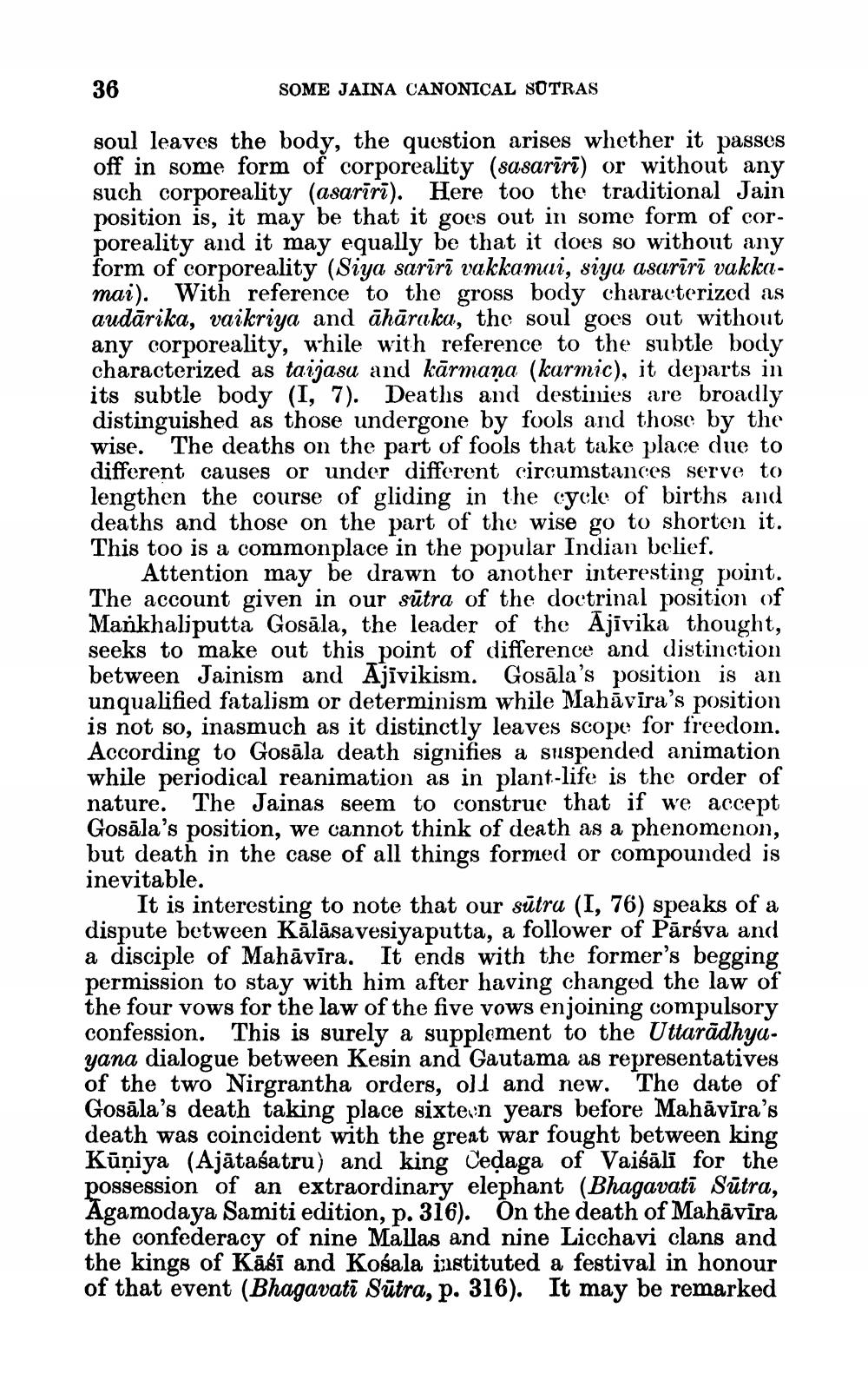________________
36
SOME JAINA CANONICAL SUTRAS
soul leaves the body, the question arises whether it passes off in some form of corporeality (sasariri) or without any such corporeality (asariri). Here too the traditional Jain position is, it may be that it goes out in some form of corporeality and it may equally be that it does so without any form of corporeality (Siya sariri vakkamai, siya asarīrī vakkamai). With reference to the gross body characterized as audārika, vaikriya and āhāraka, the soul goes out without any corporeality, while with reference to the subtle body characterized as taijasa and kārmaņa (karmic), it departs in its subtle body (I, 7). Deaths and destinies are broadly distinguished as those undergone by fools and those by the wise. The deaths on the part of fools that take place due to different causes or under different circumstances serve to lengthen the course of gliding in the cycle of births and deaths and those on the part of the wise go to shorten it. This too is a commonplace in the popular Indian belief.
Attention may be drawn to another interesting point. The account given in our sutra of the doctrinal position of Mankhaliputta Gosala, the leader of the Ajivika thought, seeks to make out this point of difference and distinction between Jainism and Ajivikism. Gosala's position is an unqualified fatalism or determinism while Mahavira's position is not so, inasmuch as it distinctly leaves scope for freedom. According to Gosala death signifies a suspended animation while periodical reanimation as in plant-life is the order of nature. The Jainas seem to construe that if we accept Gosala's position, we cannot think of death as a phenomenon, but death in the case of all things formed or compounded is inevitable.
It is interesting to note that our sutra (I, 76) speaks of a dispute between Kalasavesiyaputta, a follower of Parsva and a disciple of Mahāvīra. It ends with the former's begging permission to stay with him after having changed the law of the four vows for the law of the five vows enjoining compulsory confession. This is surely a supplement to the Uttaradhyayana dialogue between Kesin and Gautama as representatives of the two Nirgrantha orders, old and new. The date of Gosala's death taking place sixteen years before Mahāvira's death was coincident with the great war fought between king Kūniya (Ajātaśatru) and king Ceḍaga of Vaisali for the possession of an extraordinary elephant (Bhagavati Sūtra, Agamodaya Samiti edition, p. 316). On the death of Mahavira the confederacy of nine Mallas and nine Licchavi clans and the kings of Kāśī and Kosala instituted a festival in honour of that event (Bhagavati Sūtra, p. 316). It may be remarked




